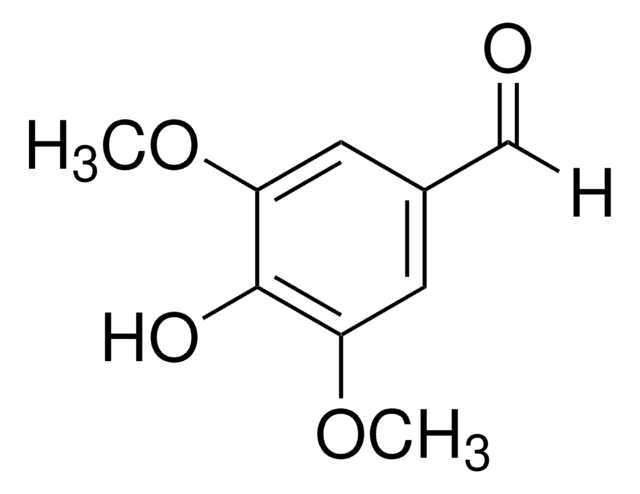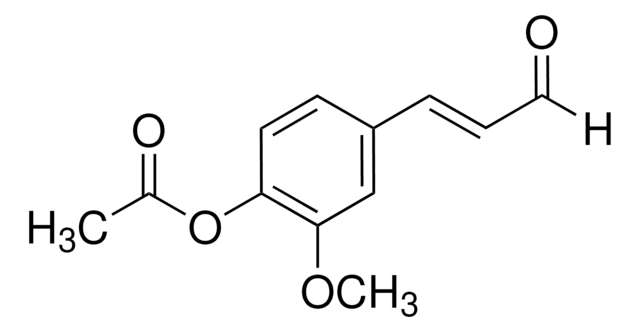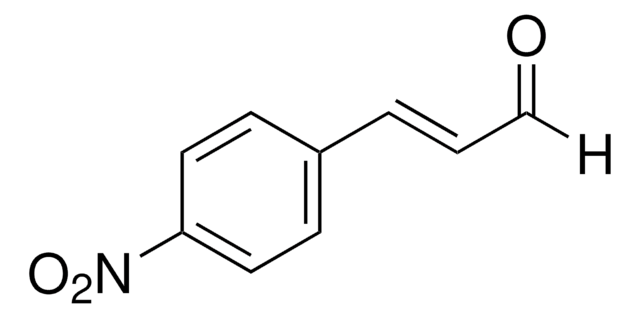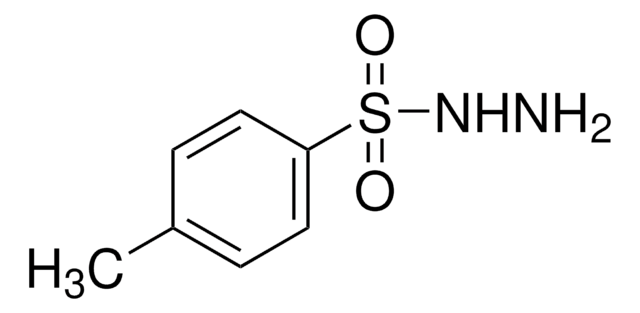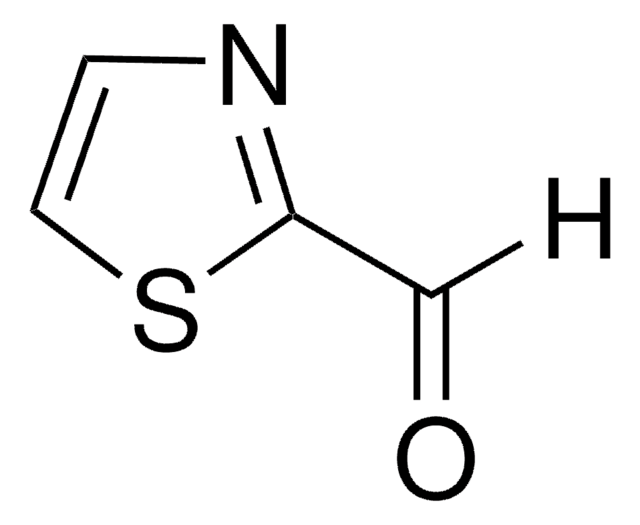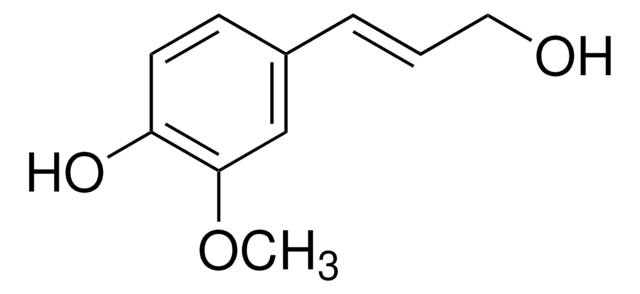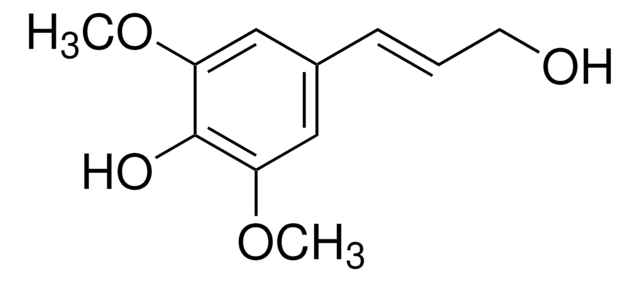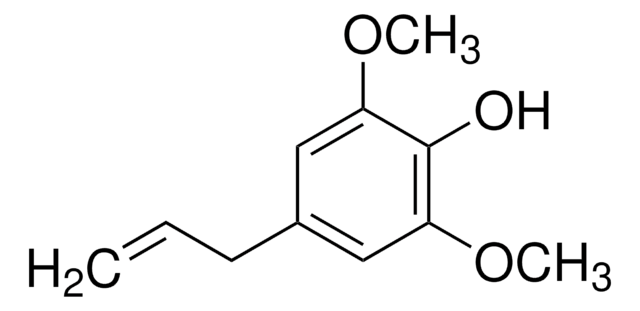382051
4-Hydroxy-3-methoxycinnamaldehyde
98%
Synonym(s):
Coniferyl aldehyde
Sign Into View Organizational & Contract Pricing
All Photos(3)
About This Item
Linear Formula:
HOC6H3(OCH3)CH=CHCHO
CAS Number:
Molecular Weight:
178.18
EC Number:
MDL number:
UNSPSC Code:
12352100
PubChem Substance ID:
NACRES:
NA.22
Recommended Products
Quality Level
assay
98%
bp
175 °C/5 mmHg (lit.)
mp
80-82 °C (lit.)
functional group
aldehyde
SMILES string
COc1cc(\C=C\C=O)ccc1O
InChI
1S/C10H10O3/c1-13-10-7-8(3-2-6-11)4-5-9(10)12/h2-7,12H,1H3/b3-2+
InChI key
DKZBBWMURDFHNE-NSCUHMNNSA-N
General description
4-Hydroxy-3-methoxycinnamaldehyde is an isoflavonoid. It has been isolated from the insecticidally active hot dichloromethane extract of heartwood of Gliricidia sepium, seed kernels of Melia azedarach L and barks of Cinnamomum cebuense.
Application
4-Hydroxy-3-methoxycinnamaldehyde is suitable for use in a study to investigate the antioxidant and antiradical activities of ferulates using a β-carotene-linoleate model system and a DPPH radical scavenging assay, respectively.
signalword
Warning
hcodes
Hazard Classifications
Eye Irrit. 2 - Skin Irrit. 2 - STOT SE 3
target_organs
Respiratory system
Storage Class
11 - Combustible Solids
wgk_germany
WGK 3
flash_point_f
Not applicable
flash_point_c
Not applicable
ppe
dust mask type N95 (US), Eyeshields, Gloves
Choose from one of the most recent versions:
Already Own This Product?
Find documentation for the products that you have recently purchased in the Document Library.
Customers Also Viewed
María C Carpinella et al.
Journal of agricultural and food chemistry, 53(8), 2922-2927 (2005-04-14)
In the continuous search for antifungal compounds from plants, the hydroxycoumarin scopoletin (1) was isolated from seed kernels of Melia azedarach L. from which three other compounds, vanillin (2), 4-hydroxy-3-methoxycinnamaldehyde (3), and (+/-) pinoresinol (4), have also been isolated. Guided
Seikwan Oh et al.
Archives of pharmacal research, 29(6), 469-475 (2006-07-13)
A series of yakuchinone B 1f and its analogs 1a-e was synthesized and evaluated for free radical scavenging, suppression of LPS-induced NO generation, cytotoxicity and anti-excitotoxicity in vitro. Compound 1c exhibited potent anti-excitotoxicity, while all compounds 1a-f showed considerable effects
Isoflavonoids and a pterocarpan from< i> Gliricidia sepium</i>.
Herath HMTB, et al.
Phytochemistry, 47(1), 117-119 (1998)
Antioxidant and antiradical activity of ferulates.
Karamac M, et al.
Czech Journal of Food Sciences, 23(2), 469-475 (2005)
M Lisa Manier et al.
Journal of the American Society for Mass Spectrometry, 22(8), 1409-1419 (2011-09-29)
Isoniazid (INH) is an important component of front-line anti-tuberculosis therapy with good serum pharmacokinetics but unknown ability to penetrate tuberculous lesions. However, endogenous background interferences hinder our ability to directly analyze INH in tissues. Chemical derivatization has been successfully used
Global Trade Item Number
| SKU | GTIN |
|---|---|
| 382051-1G | 4061831961669 |
| 382051-5G | 4061831810769 |
Our team of scientists has experience in all areas of research including Life Science, Material Science, Chemical Synthesis, Chromatography, Analytical and many others.
Contact Technical Service